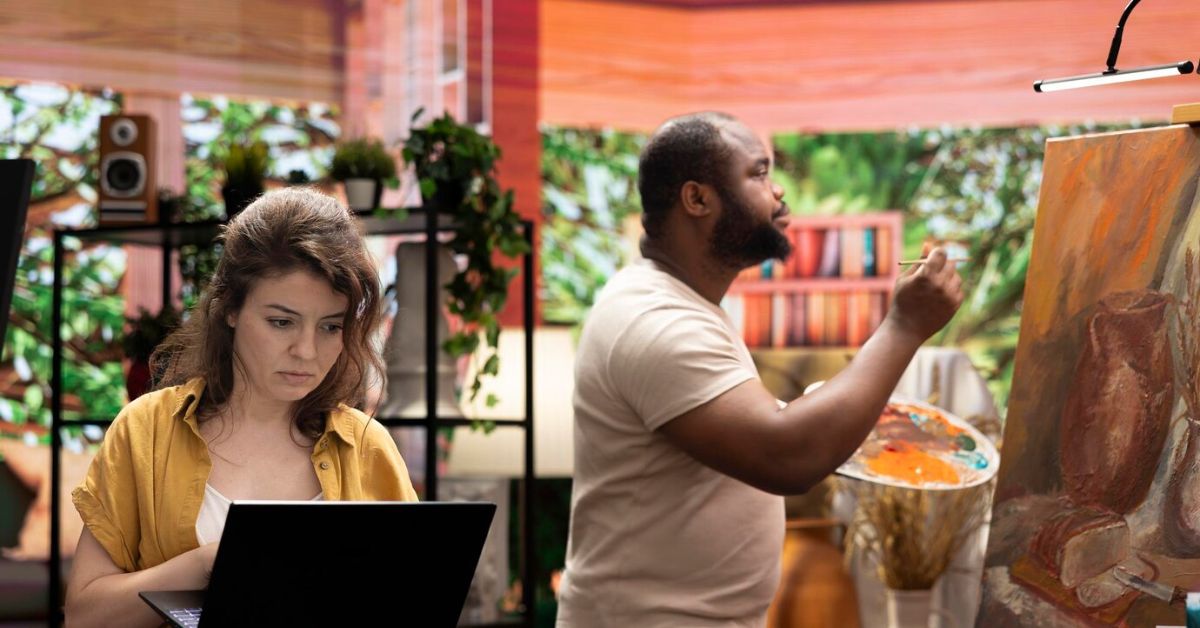An art auction is more than a marketplace. It’s part theater, part ritual, part financial transaction—and wholly captivating. In grand halls or sleek online platforms, bidders raise paddles, auctioneers chant numbers with rhythmic urgency, and silence often speaks louder than speech. But beyond the adrenaline and gavel strikes, there’s something deeper happening. These events perform culture. They tell us what’s valuable, who decides, and how taste, status, and money intersect.
The Setting: Where Art Auctions Feel Like Rituals
The Grand Stage of Value
Art auctions frequently take place in striking locations, such as opulent hotels, historic structures, and these days, well-designed web interfaces. The environment is deliberate. A feeling of occasion is created by quiet tones, soft lighting, and red carpets. Just like a theater, the stage is set to signal that something important is about to happen.
Silence, Choreography, and Presence
The seating arrangement, paddle raising, and the precise cadence of bids all contribute to the auction’s choreography. Even silence becomes a tool—heavy with tension as a bidder hesitates or as a piece nears its reserve price. This atmosphere lends gravitas to the event and elevates the artwork itself.
The Language of the Auctioneer
More Than Fast-Talking
The auctioneer’s chant isn’t just fast-paced entertainment—it’s coded language. Numbers, bids, and pauses signal action, urgency, and control. A good auctioneer reads the room like a conductor, knowing when to push, pause, or pivot.
The Gavel as a Symbol
When the gavel falls, it doesn’t just end a sale. It marks a transition—ownership changes hands, and history is made. The moment is brief, but packed with meaning. The sound, familiar and final, is the punctuation mark on a public declaration of value.
Bidders and the Art of Participation
Who Raises the Paddle?
The people at art auctions range from billionaire collectors to first-time bidders. But no matter who they are, everyone plays a role. Bidding is both a financial decision and a performance of desire.
Private Feelings, Public Acts
Buying art in this setting isn’t just personal. It’s public. The crowd watches, the press might report it, and your bid becomes part of the narrative. This public nature makes art auctions different from gallery sales or private deals. Not only are you gaining art, but you are also asserting your position in the cultural discourse.
Drama and Strategy Behind the Scenes
Bidding Wars and Psychological Play
An art auction can feel like a chess match. Bidders may hold back early to test the room. Some pounce quickly to assert dominance. Others signal interest with a subtle nod, playing coy to avoid driving prices up. It’s strategy layered with emotion.
The Role of the House and Reserves
Auction houses like Sotheby’s and Christie’s also shape the drama. They set reserve prices (minimums below which the art won’t sell), manage estimates, and sometimes even bid on behalf of absentee clients. Their influence helps steer the action while keeping suspense alive.
Online Art Auctions and the Future of the Stage
From Paddle to Pixel
Online platforms have changed how we engage with art auctions. Now, you don’t need to be in the room to raise a bid. With virtual previews, live streamed auctions, and mobile apps, the performance is going digital—but not losing its flair.
Intimacy and Global Reach
Digital auctions create a new kind of intimacy. You may be bidding alone in your kitchen, but you’re part of a global audience. The auction house becomes a broadcast studio. The gavel falls not in a room, but across a network of screens—and yet, it still feels momentous.
Why We Watch, Even If We Don’t Buy
Spectacle as Entertainment
There’s a reason auction clips go viral. The tension, the drama, the sudden million-dollar jumps—it’s thrilling, even if you’re not a buyer. Art auctions have become a form of cultural entertainment.
The Allure of Possibility
The auction raises the question, “What if?” even if you are not placing a bid.The spectacle draws us in not just for the art, but for the fantasy of participating in something grand.
Conclusion
Art auctions are not just about selling paintings. They’re about performance, power, and public meaning. In the hush before the gavel falls, we glimpse a strange blend of theater and market, culture and capital. These events mirror how society values not just objects—but stories, identity, and status.
Whether it’s a $100,000 sketch or a $100 million masterpiece, each sale adds a brushstroke to the larger canvas of how art lives in the world. So next time you hear that sharp rap of the gavel, remember: it’s not just a sale. It’s a statement.
FAQs
What is an art auction?
Artworks are sold to the highest bidder in an art auction, which can be held in person or online. It involves live bidding, an auctioneer, and sometimes pre-set reserve prices.
Why are art auctions important?
Art auctions play a big role in setting market values for artworks. They also make buying and selling art a public act, shaping cultural and financial trends.
Can anyone participate in an art auction?
The majority of art auctions are accessible to the general public. While some pieces may cost millions, others are more affordable, and many auctions welcome first-time bidders.
What makes art auctions feel like a performance?
The formal setting, the auctioneer’s chant, the bidding rituals, and the public nature of the event all contribute to the theatrical, almost ceremonial feel of art auctions.











